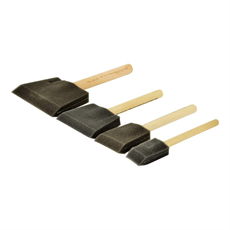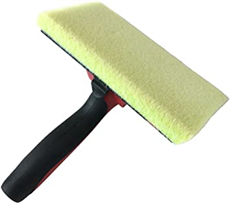Watercolor brushes and acrylic brushes are designed for use with two different types of paint, and they have distinct characteristics to accommodate the unique properties of each medium. Here are the key differences between watercolor brushes and acrylic brushes:
Watercolor Brushes:
- Bristle Material:
- Watercolor brushes typically have softer bristles. They are often made from natural hair, such as sable, squirrel, or goat, although synthetic options are also available. The softness of these brushes helps with holding and releasing water effectively.
- Absorbency:
- Watercolor brushes are designed to absorb and hold a significant amount of water and paint. This feature allows artists to create flowing and transparent washes of color, as watercolors rely on the dilution of pigments with water for their characteristic translucency.
- Shape:
- Watercolor brushes come in various shapes, including round, flat, and filbert. Round brushes are especially popular for creating precise lines and washes, while flats and filberts are used for broader strokes and washes.
- Handle Length:
- Watercolor brushes often have longer handles, which provide better control when working at a distance from the paper. This is particularly useful for techniques such as “wet-on-wet” and “wet-on-dry.”
- Durability:
- Natural hair watercolor brushes can be delicate and require proper care to maintain their shape and performance. They may not withstand the same level of wear and tear as acrylic brushes.
- Cleaning:
- Watercolor brushes are generally easier to clean since watercolor paints are water-soluble. Simply rinsing the brush with water is usually sufficient.
Acrylic Brushes:
- Bristle Material:
- Acrylic brushes are often made with synthetic bristles, although there are also acrylic brushes with natural hair bristles. Synthetic brushes are preferred because acrylic paint can be harsh on natural bristles, leading to damage over time.
- Stiffness:
- Acrylic brushes have stiffer bristles compared to watercolor brushes. This stiffness helps with handling the thicker consistency of acrylic paint.
- Absorbency:
- Acrylic brushes are designed to hold less water than watercolor brushes. This is because acrylic paints are water-resistant once dried, and excessive water can dilute the paint’s adhesive properties.
- Shape:
- Acrylic brushes come in various shapes, including round, flat, filbert, angular, and fan. These shapes cater to different techniques and applications, such as fine details, broad strokes, or impasto effects.
- Handle Length:
- Acrylic brushes may have shorter handles compared to watercolor brushes. This design provides better control and maneuverability for working on a canvas or other acrylic-friendly surfaces.
- Durability:
- Synthetic brushes are more durable and resilient, making them suitable for the often abrasive nature of acrylic paint. They can withstand the cleaning required to remove dried acrylic paint.
- Cleaning:
- Acrylic brushes require thorough cleaning with water and sometimes a mild soap or acrylic brush cleaner to remove dried paint from the bristles. Prompt cleaning is essential to prevent acrylic paint from drying and hardening on the brush.
In summary, the main differences between watercolor and acrylic brushes lie in their bristle material, absorbency, stiffness, and durability. Watercolor brushes are designed for absorbing and holding water, while acrylic brushes are built to handle the thicker, water-resistant nature of acrylic paint. Choosing the appropriate brush for your medium ensures better results and longer brush life.














